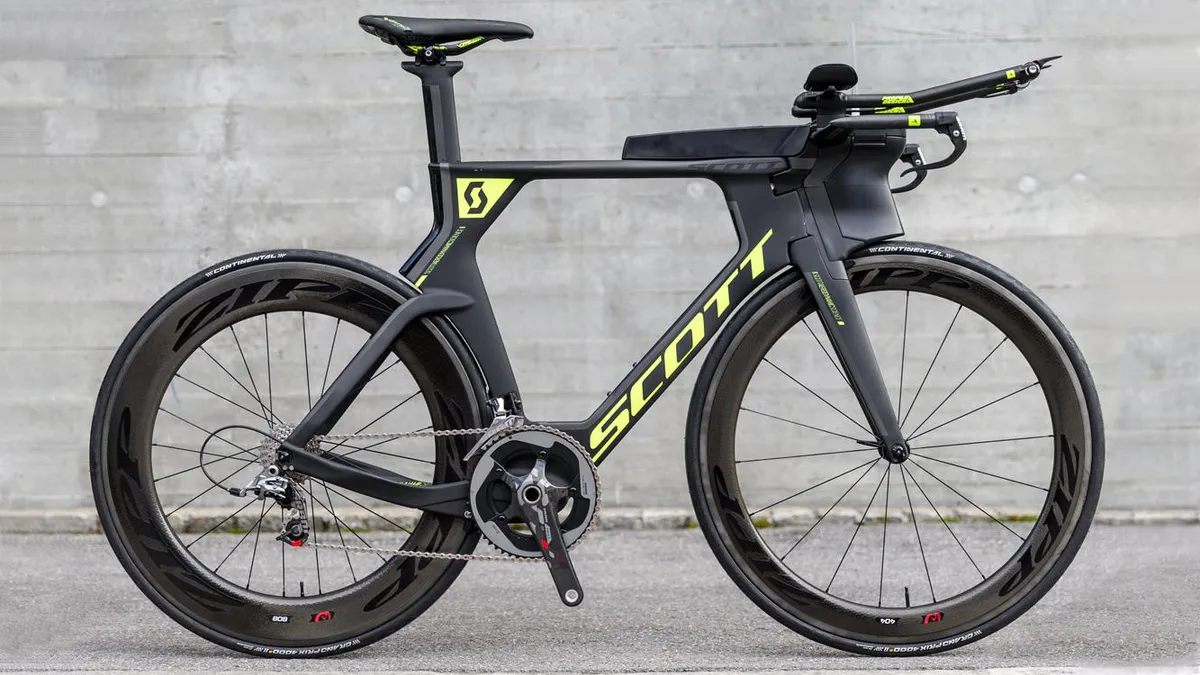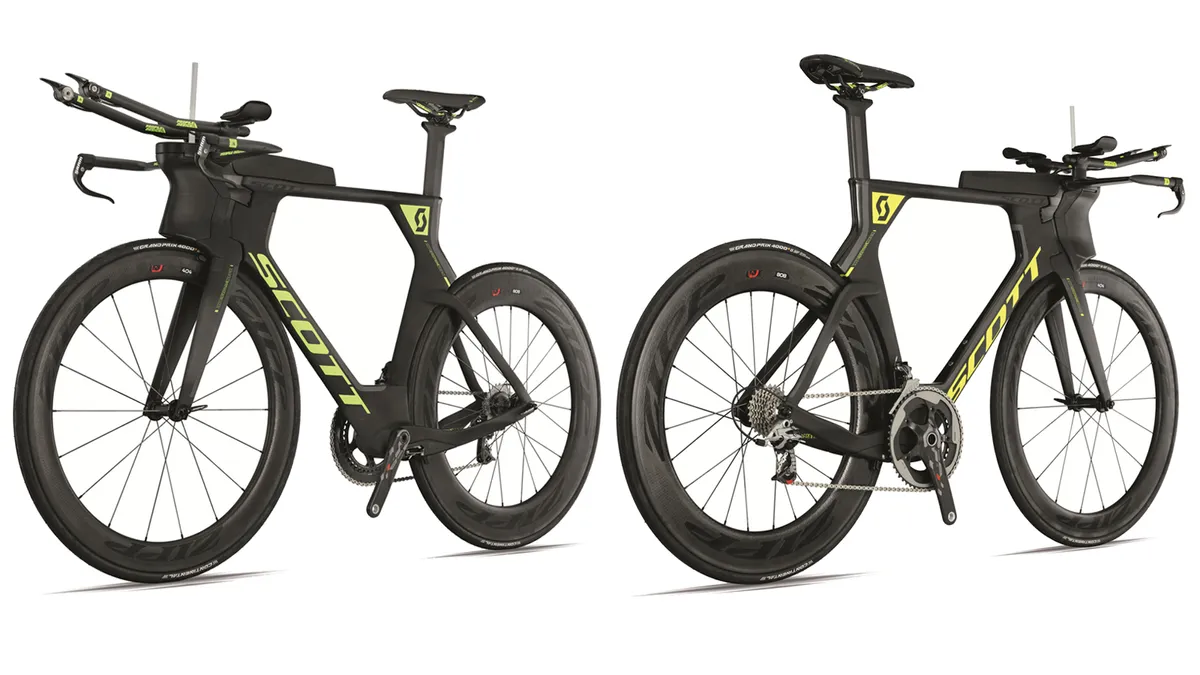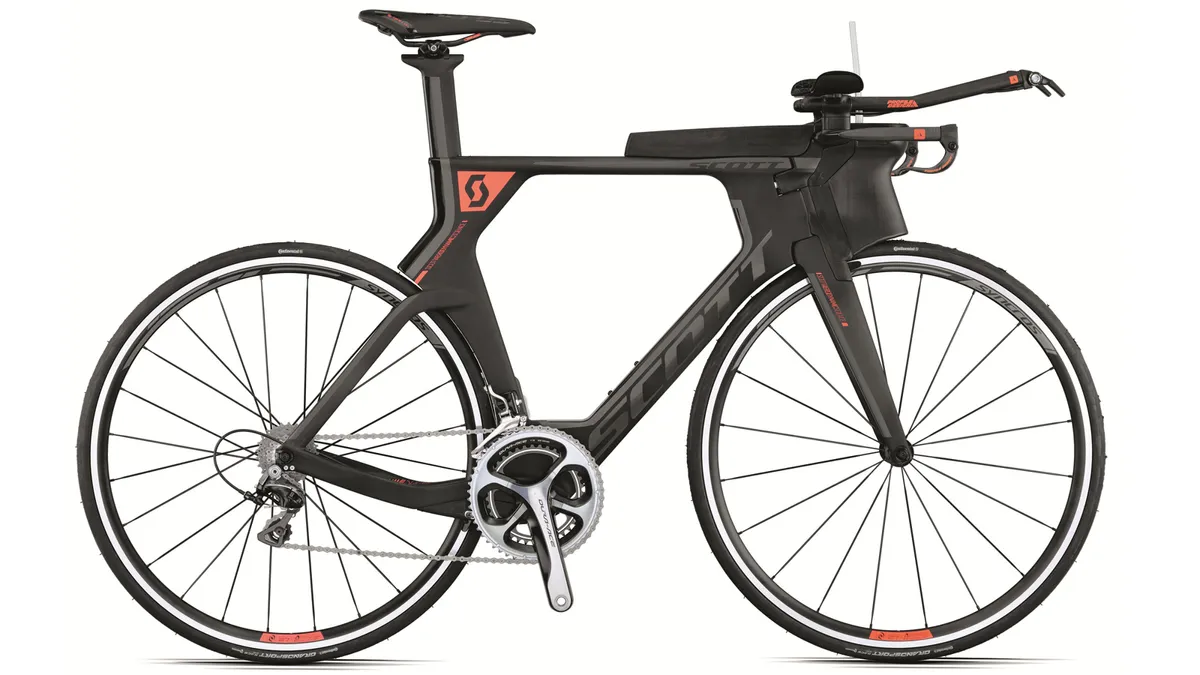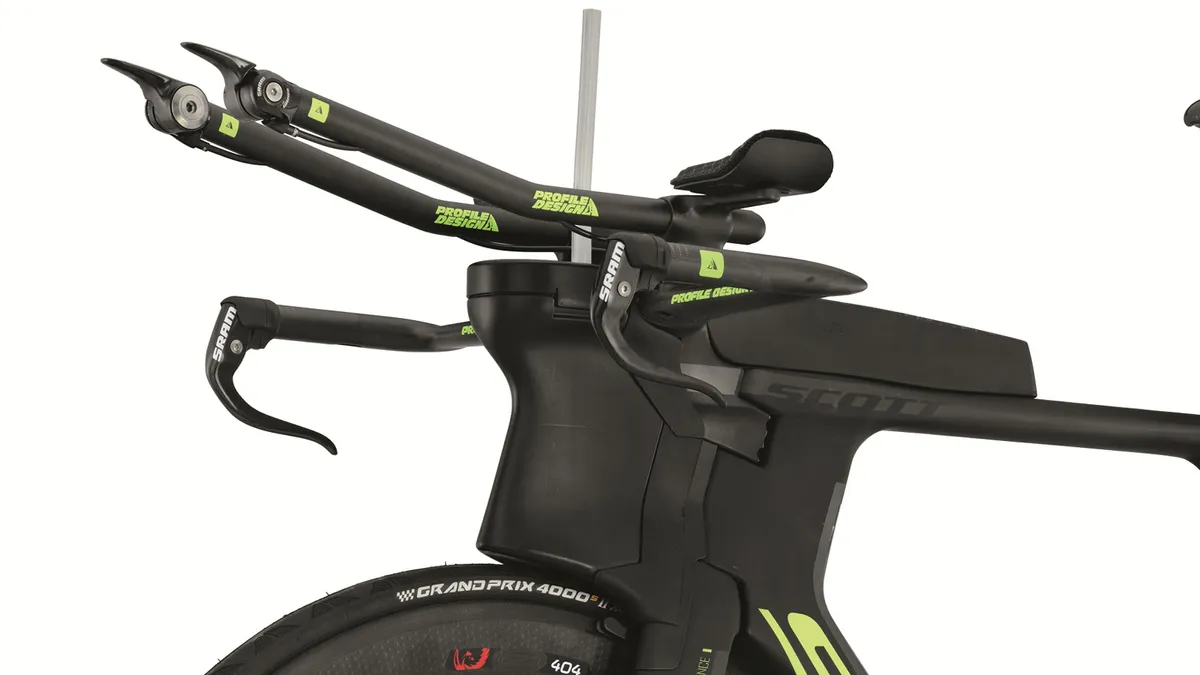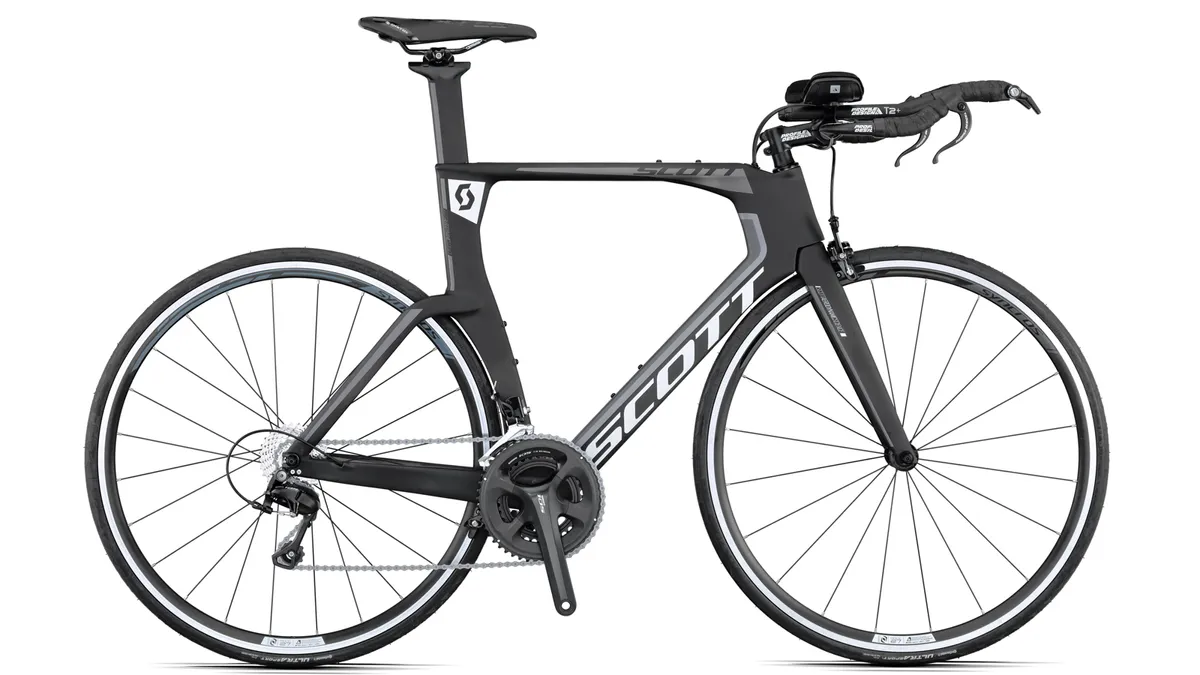Scott has unveiled the new version of its range-topping time-trial/triathlon bike, the Plasma 5, along with the Plasma 4, which inherits many of its big brother’s advancements.
The Plasma 5 has a completely new frame, which Scott says is 47 percent stiffer that of the old Plasma 3. It also features integrated brakes, hydration and storage, which should please triathletes who are looking for a solution to on-the-bike nutrition with an aerodynamic advantage rather than cost.
Check out more of our Scott 2015 coverage.
Plasma 5 development
Scott developed the Plasma 5 in conjunction with British aerodynamicist Simon Smart, who’s probably best known in cycling circles for his work with Enve; Profile Design, which created the fully-integrated cockpit and accessories; and Ironman champion Sebastian Kienle of Germany, who recently used a prototype Plasma 5 to win the Ironman European Championships in Frankfurt, slicing 10 minutes of the 112-mile course record with his 4:12:13 bike split.
Scott effectively rebuilt the Plasma 5 from the ground up, always with the rider in mind. That doesn’t just mean a wide range of cockpit adjustment, but also that the bike has been aerodynamically optimised with a rider on board rather than on its own.
The bike’s design was honed using bespoke CFD (computational fluid dynamics) code, with the results validated throughout development in the Drag2Zero wind tunnel in Brackley, UK. In contrast to the Plasma 3’s eight-month development time, the Plasma 5 has taken 18 months to perfect.
Scott says the result is that the Plasma 5 is faster with a rider than without, and outdoes its predecessor in the aerodynamic drag stakes by an impressive seven percent or eight to 10 watts.
Frame
Though the junction of the head tube/top tube/down tube has an extended rear foil compared to the Plasma 3, the down tube itself remains much slimmer than the one found on the likes of the Cervelo P5, with a very slight wheel-hugging kink behind the front wheel. Even this is a new addition; the old Plasma has a sizable gap here.
The down tube also benefits from Scott’s work on the Foil aero road bike. It features a slight truncation, which helps keep the handling friendly in crosswinds. It also means a regular round bottle to be mounted here at a cost of only one watt.
The Plasma’s distinctive zig-zig seat junction remains, but it now flares further back over the rear wheel – increasing the rear wheel-hugger – and the seatstays are now attached horizontally rather than diagonally to further cheat the wind.
Scott claims a 47 percent increase in the head tube's torsional stiffness. This is complemented by a 130g weight saving.
The Plasma 5’s frame is made from Scott’s top tier HMX carbon. The Plasma 4 uses a slightly different mould with the company's HMF fibre and forgoes the integrated fork-head tube setup of the Plasma 5 in order to keep costs down. Scott has suggested that the Plasma 4 could start at €2,799.
Despite these changes to the front end, Scott says the Plasma 4 only concedes three percent in terms of aerodynamic drag (to the Plasma 5 without the front module) and maintains the same level of stiffness.
Integration
The integrated nose cone is actually a hydration system, which can be refilled on-the-move through a large port on the top, behind which a simple round straw pops up. This drinks system accounts for two percent of the claimed seven percent drag saving over the Plasma 3.
The rubberised top tube mounted fuel box is sculpted to the contours of the cockpit and is designed, along with the bottle, to meet the storage and nutrition needs of long-distance triathletes.
Without these accessories, the bike is fully UCI legal.
Along with the bottle and box, Profile Design has provided the cockpit setup. During the Plasma 5’s development, the positions of more than 400 riders were studied and this has informed a fully adjustable front end. Two stem and three base bar options (either flat, drop or rise), along with a series of spacers and almost universal extension compatibility, means riders should be able to find their most efficient and fastest position without too much tinkering. Both bikes are available in four sizes.
The front brake was codesigned with TRP and is integrated into the front of the fork with a cover to help smooth the air around this section.
The rear brake, situated behind the bottom bracket, is a Shimano direct-mount model that’s housed behind a hollow section that aligns with the chainstays.
Pricing
Scott originally stated the range would retail from €2,799 to €9,999 – UK prices updated below
- Bike Plasma Team Issue £8,499.00
- Bike Plasma Premium £5,299.00
- Bike Plasma 10 £2,799.00
- Bike Plasma 20 £2,399.00
The bikes are expected to go on sale by December.
